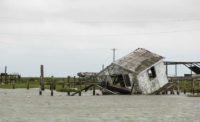The U.S. Environmental Protection Agency on Dec. 29 sent a letter to the District of Columbia and six states in the Chesapeake Bay watershed and outlining new penalties if they do not meet more stringent requirements for cleaning up water pollution.
Bay advocates have criticized federal and state efforts to clean up the bay in the past because although states have been encouraged to meet certain milestones in reducing water pollution from point and non-point sources, they typically have faced no penalties for failing to do so—until now. Penalties could include expanding National Pollutant Discharge Elimination System (NPDES) permits to sources that currently are unregulated, requiring additional pollution reductions from point sources such as wastewater treatment plants, prohibiting new or expanded pollution discharges unless sufficient offsets are provided, or redirecting EPA grants.
EPA says a new Total Maximum Daily Load (TMDL) will be completed by Dec. 31, 2010. The states and the district will be required to provide specific time lines for reducing pollution or face penalties.
EPA Administrator Lisa Jackson says the new framework is “setting clear standards for progress and ensuring accountability if those standards are not met.” But Chesapeake Bay Foundation Senior Water Quality Scientist Beth McGee says that while the agency should be commended for attempting to make states accountable, the letter falls short of CBF’s expectations. “While the letter lists a series of actions EPA may take, it lacks specifics about when EPA will impose those consequences,” she says.


Post a comment to this article
Report Abusive Comment